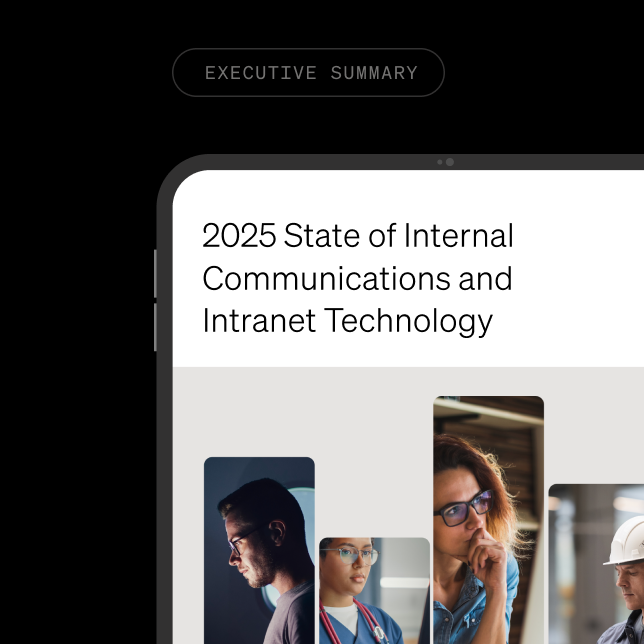Employee communication defined
Employee communication is the sharing of information, ideas, and feedback between employees and their managers. It can be verbal, over email, through mobile applications, within intranets, or through various other collaboration tools. Effective communication provides support through multiple communication channels, maintains internal knowledge bases, and centralizes information so that everyone is on the same page.

Why is employee communication important?
Poor communication can lead to misunderstandings, weak teamwork, hindered project management, and decreased productivity — creating an unstable foundation for any organization.
U.S. businesses lose about $1.2 trillion annually due to poor internal communications. That’s more than $12K per employee per year (Grammarly and The Harris Poll).
At a time when remote and hybrid work is common, having a solid communication strategy is crucial for keeping employees engaged, productive, and connected. Effective employee communication helps build trust, align teams with business goals, and foster a culture of transparency and accountability. It ensures that employees not only receive important updates but also feel heard and supported, ultimately driving better collaboration, faster decision-making, and higher performance.

Employee communication benefits
Effective employee communication is the foundation that unites a strong organization. Here are a few measurable advantages that will drive organizational success:
Improves employee engagement
People managers with the skill to make employees feel connected and committed to the organization can have a direct impact on employee engagement. When people managers communicate clearly, share their knowledge, listen actively, and show genuine care, employees are more likely to stay motivated and engaged in their daily responsibilities. Consider implementing simple employee engagement ideas that can enhance overall business performance.
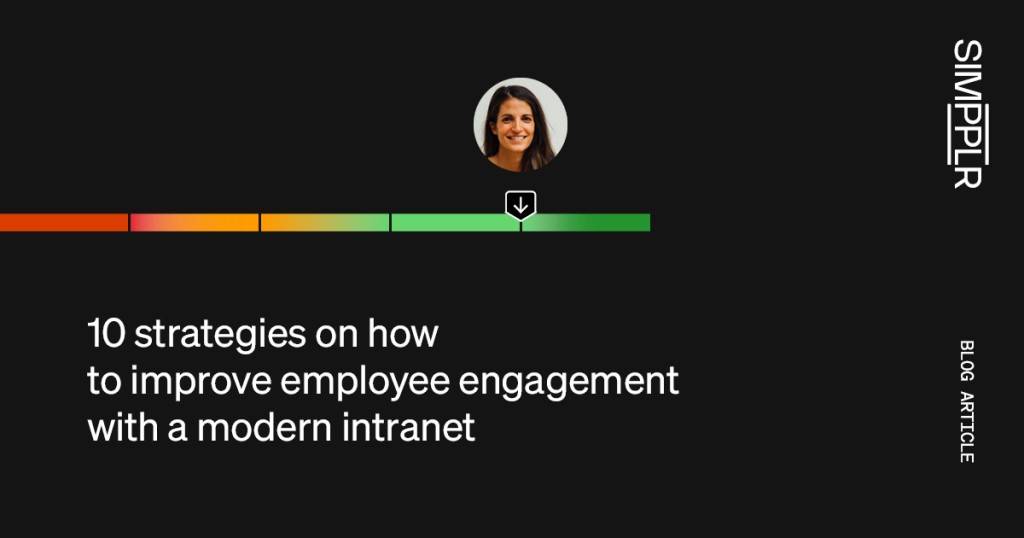
Enhances the employee experience
Employee communication isn’t about sharing updates or announcements. It’s about creating an environment where employees connect with the organization’s purpose, culture, and one another, making daily work more meaningful and easier to manage. This not only builds trust but also empowers employees to do their best work, collaborate effectively, and stay aligned with company goals.

Boosts workplace efficiency
Poor communication in the workplace can create stress and disrupt workflow within the organization. Clear and transparent employee communication helps prevent issues and resolve those that occur quickly. Having open communication between people managers and employees helps preserve a harmonious workplace collaboration.

Cultivates an inclusive workplace
Everyone wants to feel a part of the team at work. Having a solid employee communication strategy ensures no one is left out despite having different ideologies, backgrounds, or perspectives. Success happens when everyone feels like they are heard and their opinions are valued. This is key to cultivating a cohesive workplace.
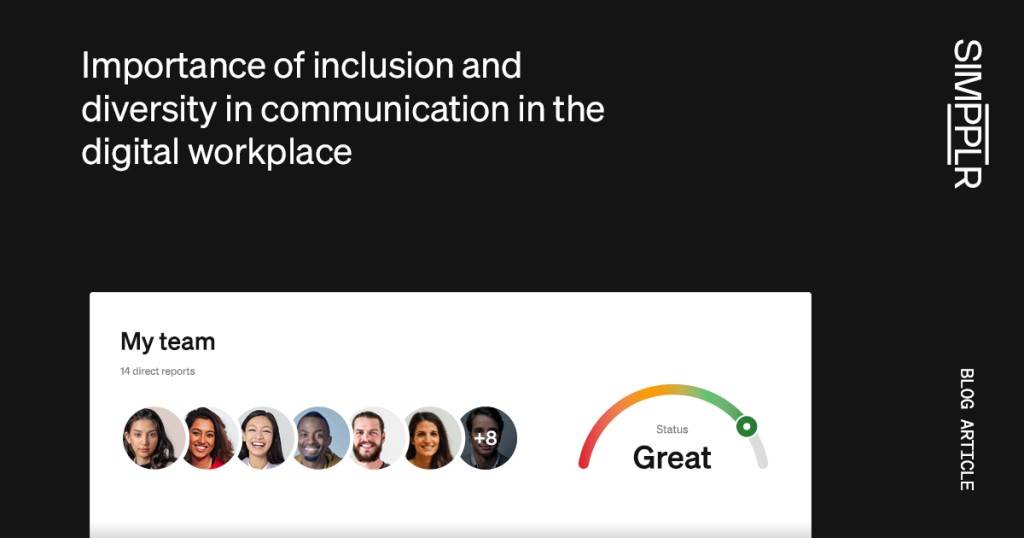
Increases inter-departmental cooperation
Effective cross-functional collaboration makes employees work towards the same goal. When employees collaborate, tasks are often completed more efficiently. According to a Stanford study, employees in a collaborative environment saw a 50% increase in productivity compared to employees working individually. By sharing responsibilities, delegating tasks, and collaborating, teams can streamline workflows and enhance overall productivity.

Increases employee productivity
When communication is clear and consistent, employees work better. According to a report by Grammarly, 72% of employees report increased productivity as a result of strong communication practices. Good communication helps reduce confusion, align teams on goals, and make it easier to share information — allowing people to focus on their work and get more done in less time.
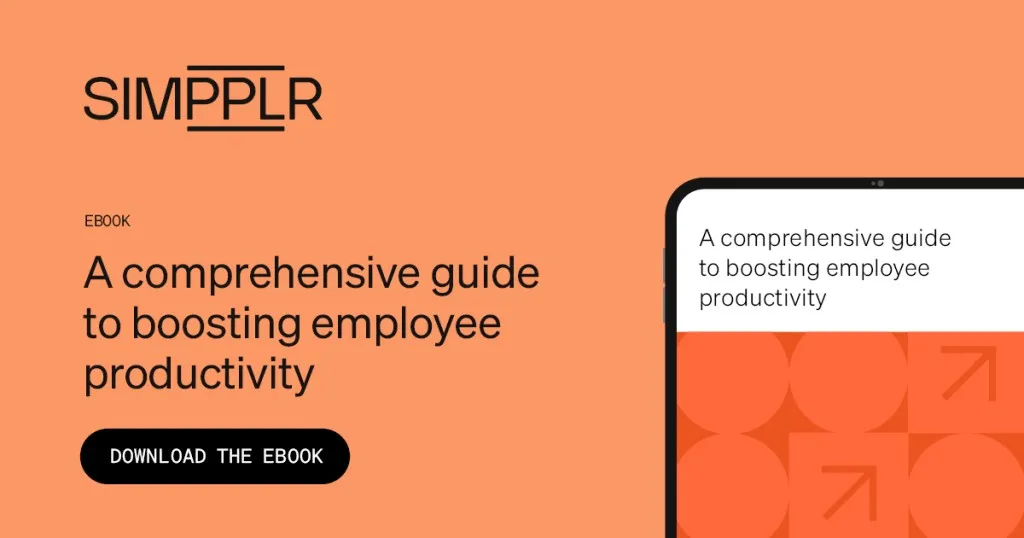
Encourages innovation
Open communication channels encourage employees to contribute new ideas. Whether it’s through brainstorming sessions, regular feedback loops, or casual conversations, employees feel empowered to share their thoughts and solutions, driving creativity and growth.
Implementing employee communication strategies
Implementing employee communication strategies is essential for fostering a connected and engaged workforce. Here’s how you can implement a robust framework:
Identify goals
Establishing well-defined objectives is fundamental to any successful employee communication plan. Without specifying targets, the strategy may lack focus, leading to unnecessary expenditure of resources.
Understand what you want to achieve with your communication efforts, whether it’s improving engagement, boosting morale, or aligning teams with company objectives.
Determine your organization’s audience
Everyone is different when it comes to styles and preferences of communication. There is no one-size-fits-all solution to employee communication. Knowing the capabilities of your team is the best way to approach your strategy.
It should be flexible enough to accommodate their capabilities and daily tasks. This goal should be achieved without spreading efforts too thin across multiple platforms. An effective solution is to launch an intranet platform that facilitates personalized communication styles under the same umbrella.
Select an employee communication tool
You most likely have an abundance of tools, such as emails, intranets, and various apps, to support your employee communications. It’s necessary to learn how each outlet can support your goals and incorporate them into a unified platform.
A unified platform, like an intranet, will ensure that internal communication channels are cohesive. The rule of seven is that most folks need to hear and read a message seven times before it sinks in. It’s important to spread your message across various channels if you expect to be heard.
Create a schedule
Timeframes are a great way to foster a cohesive work environment where everyone is aligned with your plans and goals. This approach can significantly progress towards your objectives while demonstrating the power of effective employee communication.
Involve employees
Transparency builds trust among employees. Keep communication open, share information freely, and involve employees in decision-making processes. This openness fosters a sense of belonging and encourages employees to share their ideas and concerns. When employees feel heard and included, they’re more likely to be engaged, take ownership of their work, and contribute to the organization’s success.
Monitor and enhance your employee communication strategy
Employee communication is more than just a one-and-done task. It must be constantly monitored and adjusted as your team changes and grows. Consistently gathering and measuring employee feedback will allow you to see where your communication is failing.
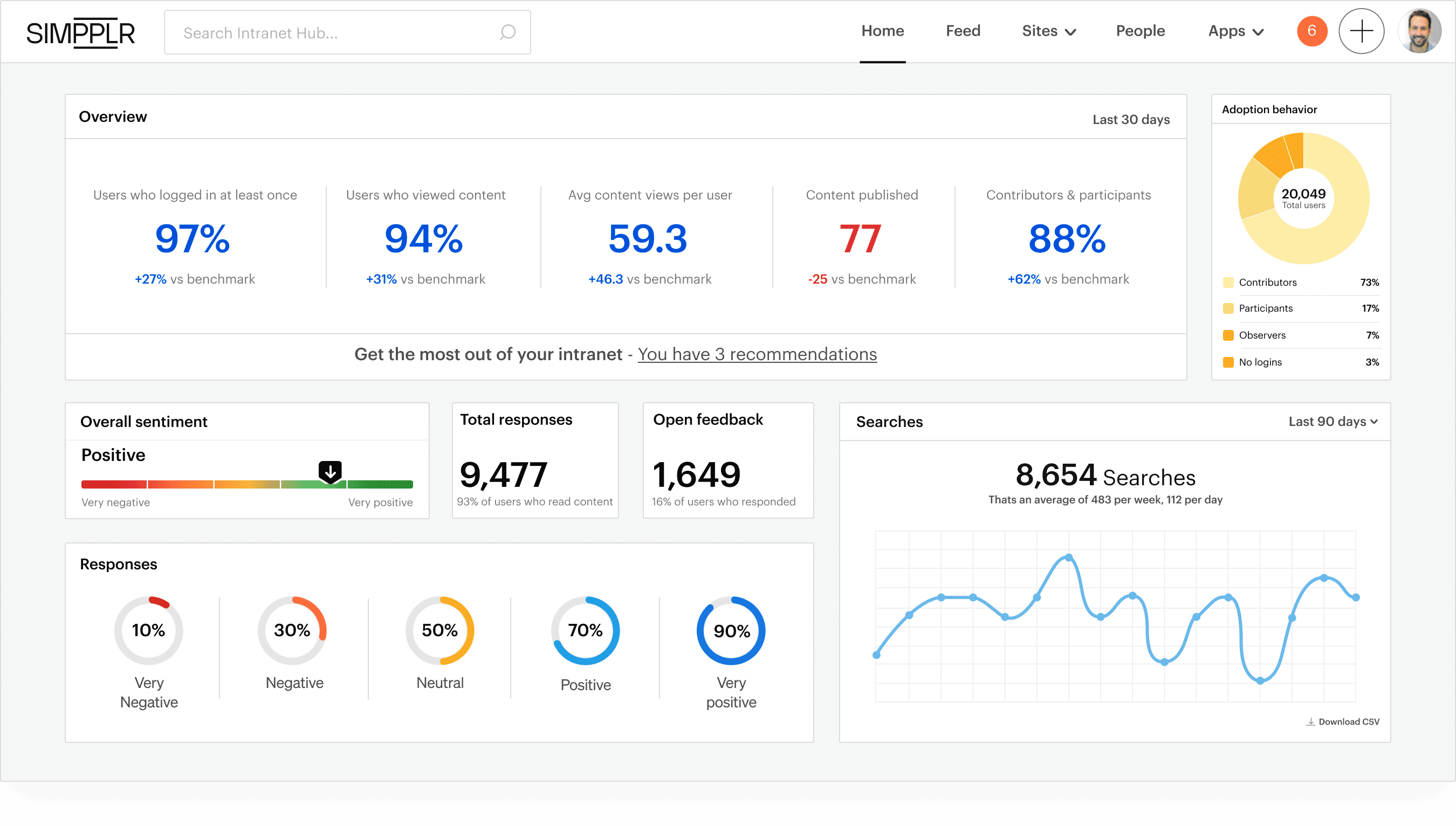
A way to enhance your practices is to deploy an intranet platform embedded with real-time prescriptive analytics functionality. This is especially critical when it comes to employee communication, as identifying and rectifying any gaps in your communication is essential to prevent them from negatively impacting your business. Effective employee communication is crucial in ensuring a seamless workflow and promoting a harmonious work environment. Therefore, paying keen attention to any gaps and mending them promptly is of utmost importance.
Best practices for a successful employee communication strategy
A well-positioned employee communication strategy can transform the work experience. Here are a few tips to build a more connected, informed, and engaged workforce:
Choose the best employee communication channel
To ensure your message reaches everyone, choose the right tool that simplifies employee communication. Take some time to explore various communication software options, such as instant messaging applications, video conferencing tools, employee newsletters, voice over internet protocol (VoIP) solutions, or a robust intranet and employee experience platform, to ensure smooth two-way communication. Once you find what works best, integrate it into your daily communication routine.
Related: Top 10 must-have internal communication tools
Encourage open and honest employee communication
Employees are more likely to engage when they feel safe to speak openly and honestly. Encouraging this kind of open-door environment builds trust between teams and leadership. It also promotes two-way communication, where feedback and ideas can flow freely in both directions, leading to better collaboration, stronger alignment, and more meaningful contributions to the organization’s success.
Related: Why employee communication is a two-way street
Frequently ask for employee feedback
Effective employee communication often hinges on honest feedback. Encourage employees to share their feedback through pulse surveys, town hall meetings, and roundtables. These methods enable organizations to proactively address potential concerns, opportunities, and trends, ultimately leading to improved engagement, retention, and productivity among employees.
Related: 5 steps to launch your first employee feedback survey with Simpplr
Send targeted communications
During significant changes, such as mergers, new product launches, or rebrandings, it’s essential to communicate clearly about why these changes are occurring, how they will be implemented, and the impact on the workplace. Instead of overwhelming employees with information, it’s better to plan targeted communications focusing on the shared vision behind the change, its process, and any revised goals.
Related: How to use AI to personalize and target internal communications — and why it matters
Using technology for effective employee communication
Technology improves every aspect of employee communication. From smartphones to computers, apps, and intranets, tech is the backbone of every high-level employee communication strategy.
Technology facilitates real-time communication, provides a centralized platform, enhances the reach and speed of communication, and improves collaboration. Overall, technology is an invaluable tool for improving employee communication and helping organizations to stay connected and productive.
Employee communication tools
Intranet
Setting clear goals and implementing an effective employee communications strategy, supported by the right intranet platform, will enable your team to communicate efficiently and effectively, regardless of its size or location.
Another great benefit of a modern intranet is that it creates a single source of truth. This helps ensure clarity across different communication channels.
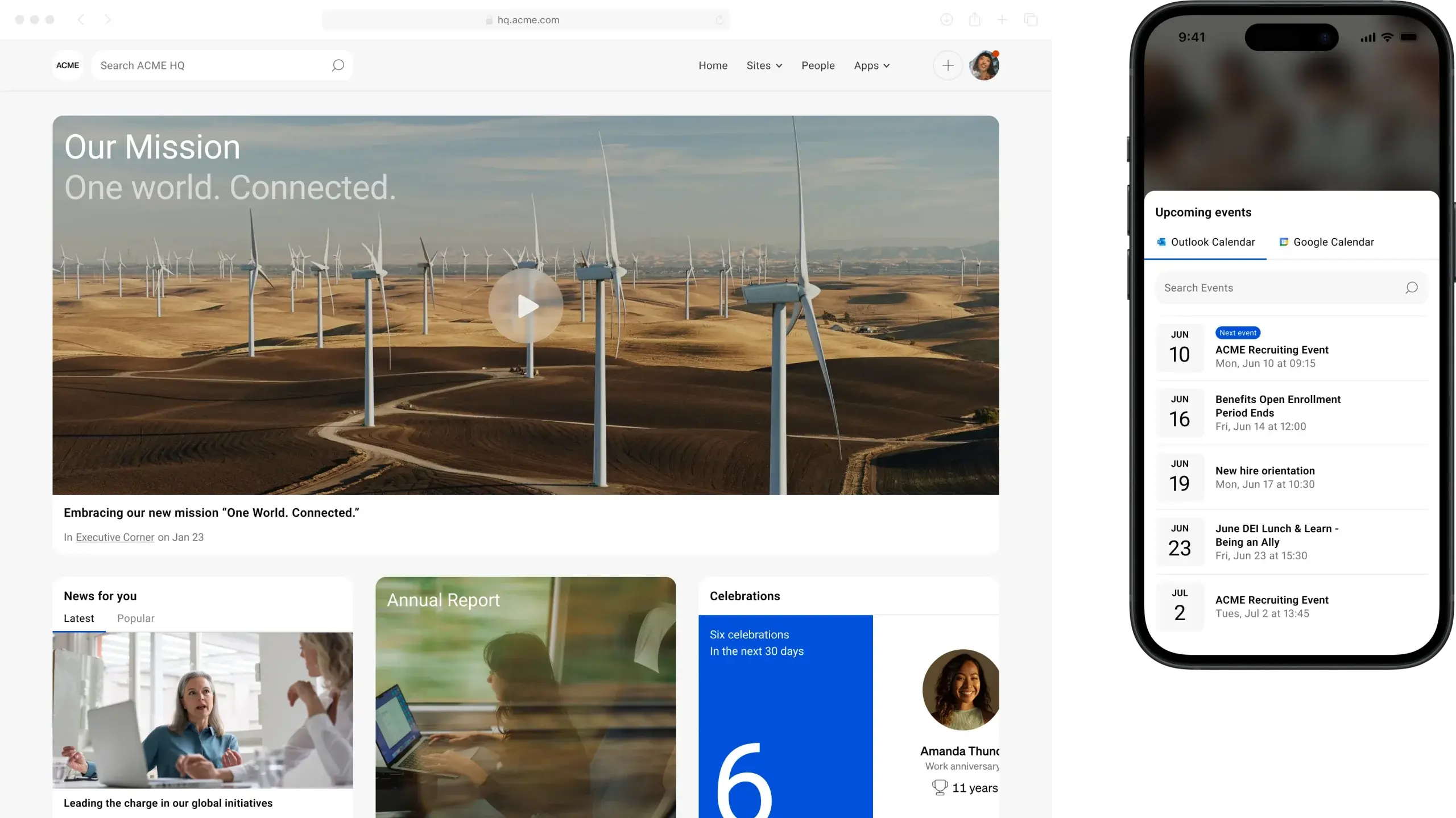
Related: 4 steps to launch your modern intranet
Leveraging employee communication effectively is pivotal for any business to thrive. Amongst the myriad of communication channels, email stands out as a highly effective one, if wielded appropriately. It offers a prompt and inclusive way to get a message out, fostering productive and streamlined communication within the workforce.
Prioritize efficiency and relevance in your employee communication strategy. Try to keep emails concise and consider reducing the frequency without compromising essential updates. When your employees perceive that each communication piece holds significance, it improves engagement and absorption of the information provided.
Mobile apps
One of the most efficient tools of communication is the smartphone. The modern employee is not always attached to a desk or computer. Smartphones allow your team the ability to stay up to speed on communications within your organization, even if they work remotely.
Mobile apps are a great way to encourage community, information sharing, and engagement. They help ensure that all employees across your organization can communicate and contribute to company discussions, no matter where they’re based. Make sure that your employee communications are geared towards mobile.
Video and podcast
If your organization isn’t utilizing videos and podcasts, you may be missing out on a highly effective and efficient form of communication. Statista found that over 82 million people listened to podcasts in 2021, and it is expected to increase by 100 million listeners by 2024. There are many different ways that people communicate. Video and podcasts provide your organization with a creative way to convey its message.

Gamification
Gamification is a great way to foster engagement and bring a fresh approach to employee communication. Incorporating quizzes and online competitions helps build community and excitement within your organization.
Gamification is an excellent tool for training your team or onboarding new hires. It’s fun and encourages folks to think outside the box. This may be a new approach to employee communication, but it can yield great returns for your organization.
Employee collaboration tools
One of the most effective channels for employee communication is collaboration tools. Collaboration tools make communication a two-way street as employees work together, bringing diverse backgrounds and skill sets to achieve a common goal. This interdepartmental relationship leads to improved teamwork and a more cohesive work environment.
Surveys and feedback forms
Online surveys and feedback mechanisms facilitate enhanced employee communication by providing insights into areas where management excels or needs improvement. Use Simpplr’s AI-powered employee surveys to collect responses and get insights — without needing advanced training or weeks of setup. Understand employee needs through passive listening and real-time analytics, continuously gathering millions of data points across the platform to detect emotions, employee sentiment, and engagement with content.
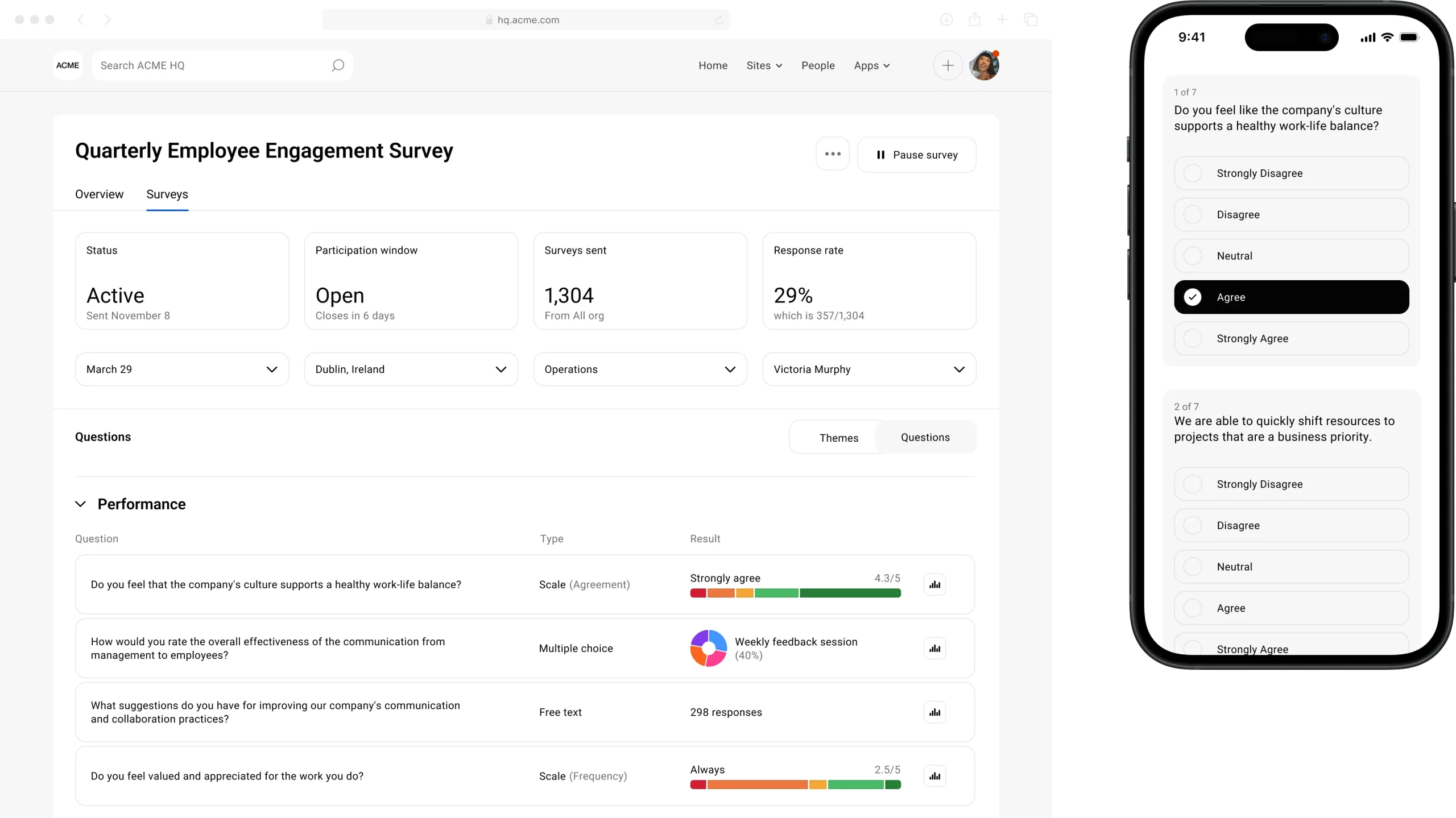
Employee communication effectiveness with KPIs
Measuring KPIs helps identify the information and type of content that employees respond to best. This allows organizations an inside view of what’s working and what’s not.
There are a number of metrics that organizations can use to measure the effectiveness of their employee communication efforts. Some examples include:
- employee engagement
- employee satisfaction
- communication channel usage
- feedback rates
- productivity
All of these metrics are an excellent way to determine if your message is getting across to your team. A good intranet platform can help you gauge the effectiveness of your communications channels by providing real-time analytics.
To learn how Simpplr can help your employee communication efforts, reach out for a demo today!

Watch a 5-minute demo
See how the Simpplr employee experience platform connects, engages and empowers your workforce.
- #1 Leader in the Gartner Magic Quadrant™
- 90%+ Employee adoption rate

